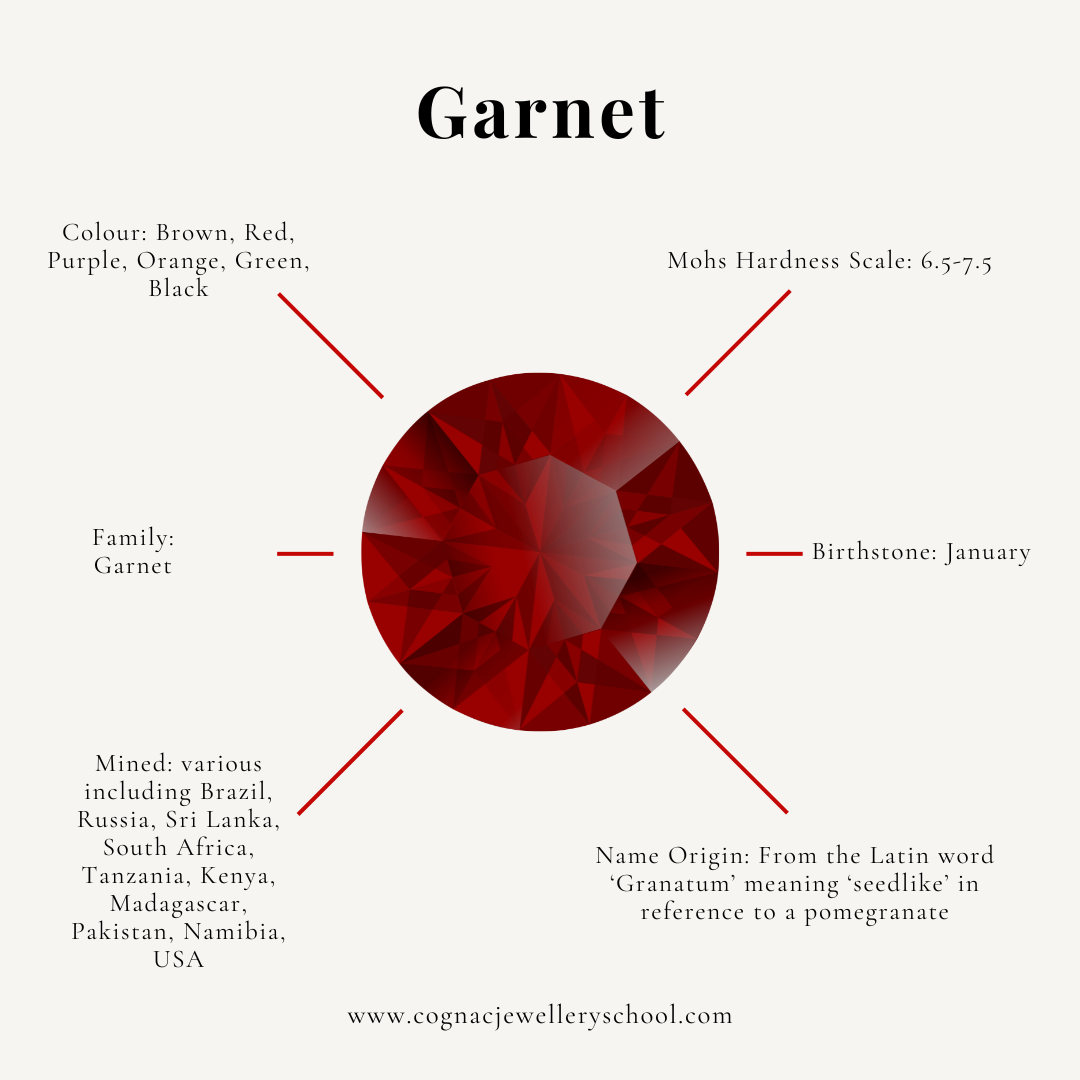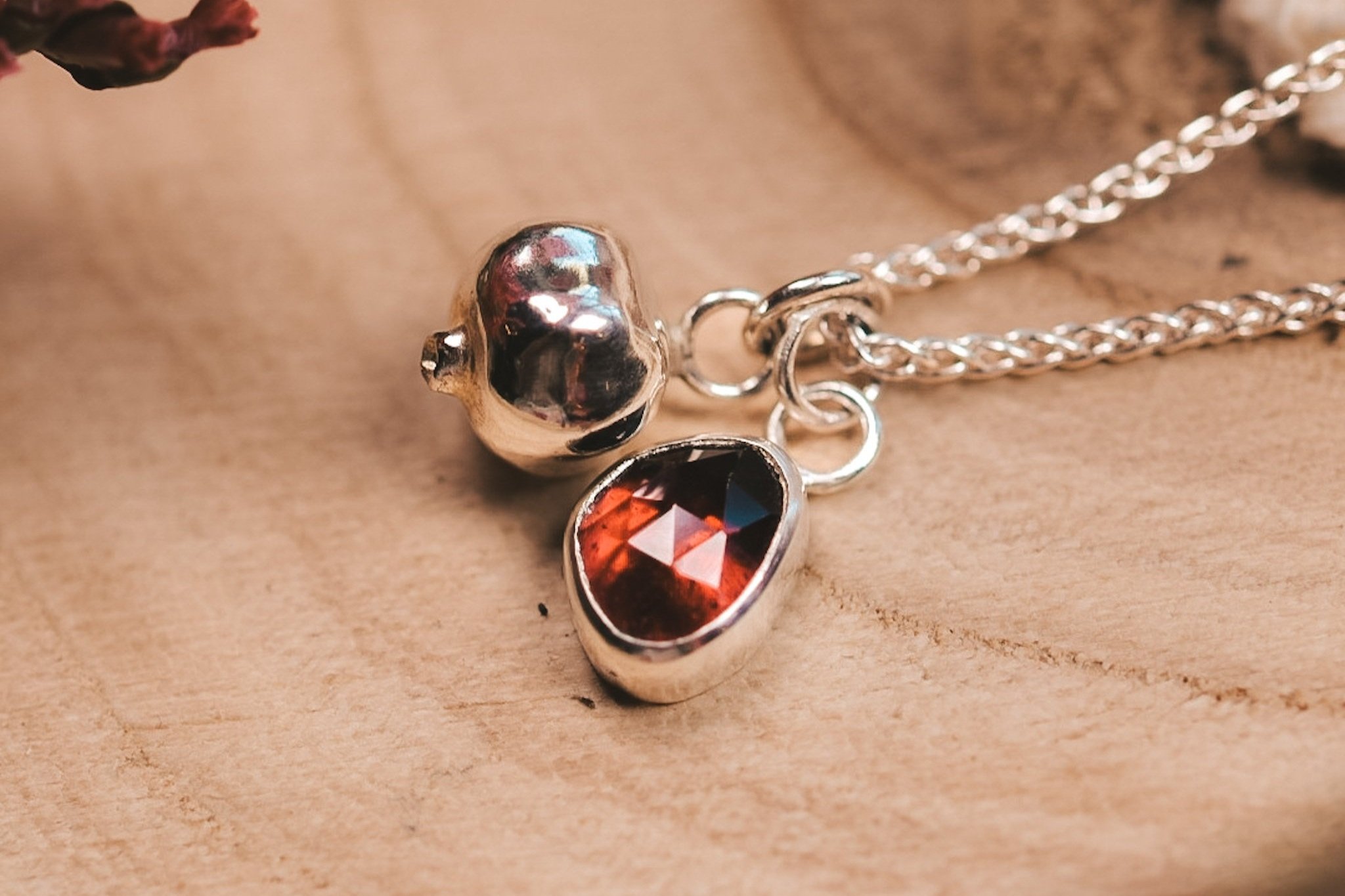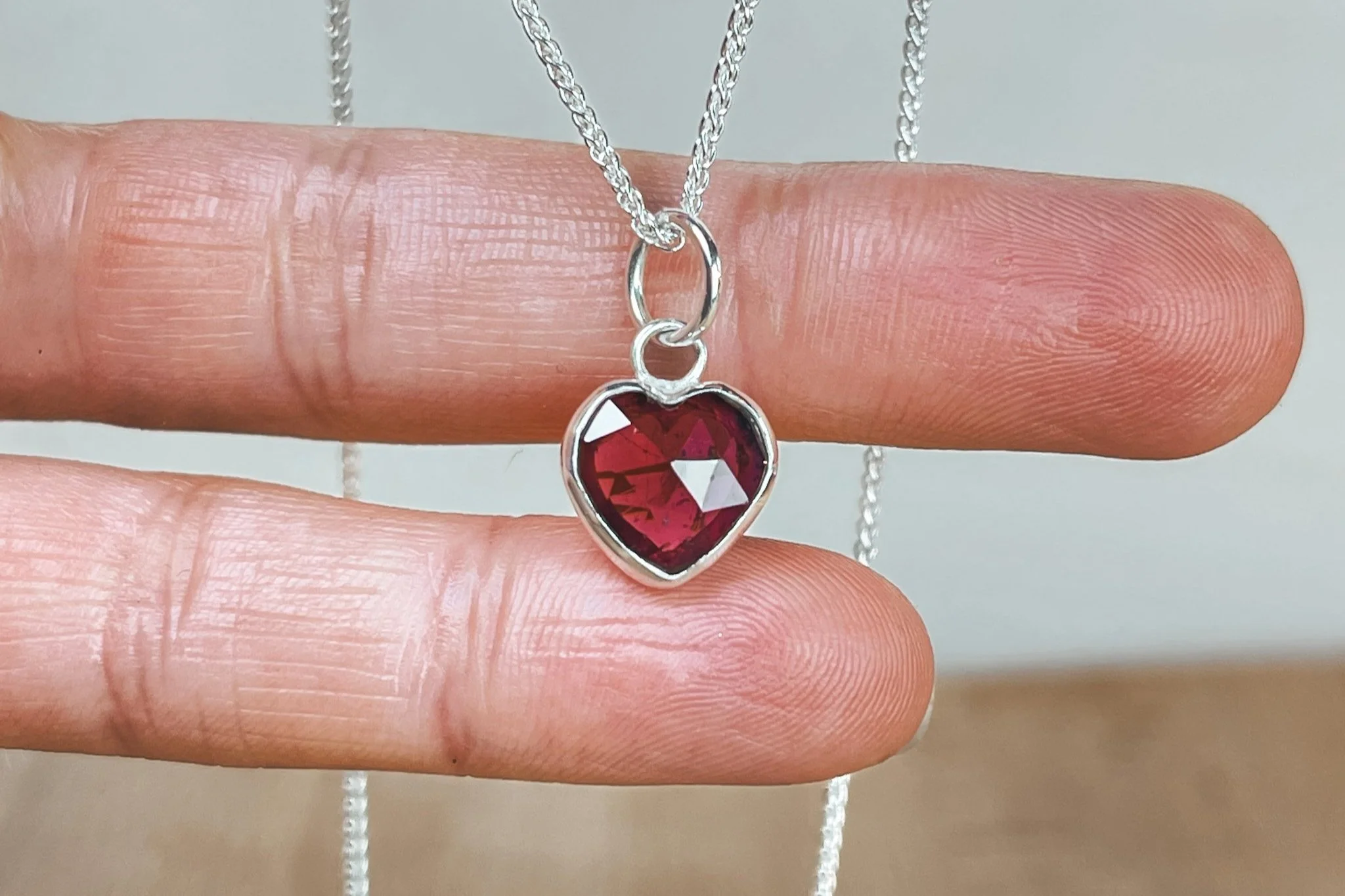Discovering Garnet: The Pomegranate Seed Stone
Named after the crimson jewel-like seeds of a pomegranate, Garnets are a group of minerals with a rich and varied history. Best known in modern times as the Birthstone for January, these semi-precious gemstones are also one of the oldest known gemstones with links to Greek mythology, Ancient Egypt and even Noah’s Ark!
The Origins and Formation of Garnets
Etymology
The name "garnet" can be traced back to the Latin word "granatum," meaning "seed," which is thought to refer to the resemblance of the red garnet to the jewelled seeds of a pomegranate.
Formation
Garnets typically form in metamorphic rocks under high pressure and temperature. They can also be found in igneous rocks and sedimentary deposits. The formation of garnets usually occurs in environments where there is a significant amount of aluminum and silica, which are key components in their chemical structure.
Use in industry
Beyond jewellery, low-grade garnets are often used as abrasives in sandblasting, water jet cutting, sandpaper and filtration.
Different types of Garnet
Usually when people think of garnets they imagine a red gemstone, but there are actually several different types of garnet each with their own unique properties and colours. A few examples are:
Demantoid - green, brown, and yellow
Tsavorite - green
Spessartine - orange
Pyrope, Almandine and Rhodolite - brown, deep red, pink
Silver pomegranate charm and silver garnet charm necklace
The Cultural Significance of Garnets Throughout History
Noah’s Ark
According to legend, a large garnet decorated a pedestal at the centre of Noah's Ark. It is said that the stone's brilliance illuminated the waters, guiding the ship safely during the night..
Greek Mythology
In Greek mythology, Persephone, the daughter of Demeter, the goddess of the harvest, was abducted by Hades, the god of the underworld. While in the underworld, Hades offered her pomegranate seeds, and when she ate them, she was bound to return to the underworld for part of each year, symbolizing the cyclical nature of the seasons and the connection between life and death. This act caused Demeter to mourn and withdraw her gifts from the earth, leading to the barren winter months, until Persephone's return heralded spring and renewal. The link between Persephone, pomegranates and garnets therefore gives rise to the custom of friends exchanging garnets on parting, which symbolises their desire to reuinte.
Ancient Egypt
Garnets worn as jewellery can be traced back to Ancient Egypt as early as 3000BC. Garnets were worn by Ancient Egyptian Pharaohs and have been discovered in tombs alongside their mummified bodies.
19th Century Pakistan
In northern Pakistan in the late 1800s, the Hunzas used garnet bullets to fight the British. They believed that garnet bullets would be more effective than lead because they were red, like blood.
Silver and garnet heart charm necklace
Garnets in Modern Times
Birthstone
Garnet is the designated birthstone for January according to list of birthstones created by The National Association of Jewellers in 1912.
Symbolism
Garnets are often associated with love, passion and commitment, making them a popular choice for romantic gifts.
Wedding Anniversary
Garnets are the designated gemstone for a 2nd wedding anniversary.
Zodiac
Garnet is commonly associated with the zodiac signs Capricorn (December 22nd - January 19th) and Aquarius (January 20th - February 18th).




